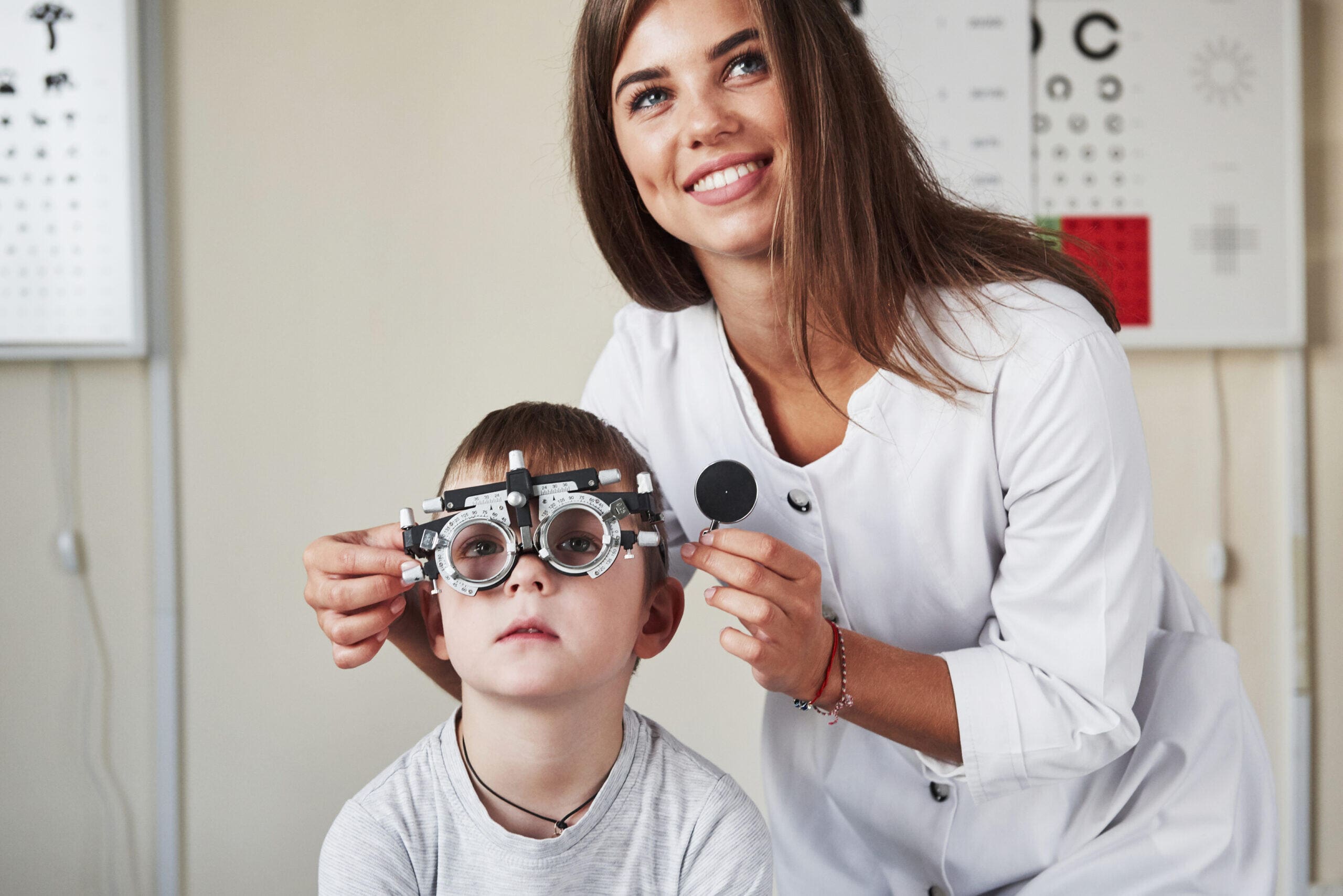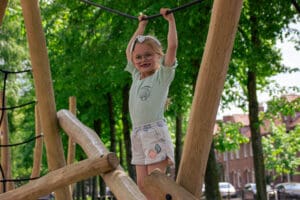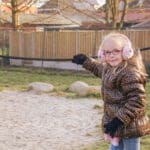The importance of outdoor play goes further than we often realise. Besides helping children develop social skills, improve motor abilities and spark creativity, playing outdoors also has a significant impact on physical health. And we’re not just talking about the fact that 40% of children don’t get enough exercise — there’s also something we don’t immediately think of: their eye health.
At BOERplay, we’ve been designing play areas for decades that encourage children to play outside, learn together and stay healthy. But did you know that play areas can also play a crucial role in reducing short-sightedness (myopia)? The number of children who wear glasses is rising rapidly, and outdoor play turns out to be one of the simplest and most effective solutions. In this blog, we explain why outdoor play is the most fun and powerful way to tackle this growing issue.
Short-sightedness (or myopia) is a condition where you can see things clearly up close but struggle to see things in the distance. It may seem like a minor issue easily fixed with glasses or contact lenses, but there’s more to it. Severe myopia (minus six or worse) increases the risk of serious eye conditions later in life, such as retinal detachment or even blindness. This issue is growing rapidly: where in the past one in five people needed glasses, by 2050 half the world’s population is expected to be short-sighted. The rise among children is particularly alarming, with younger and younger children developing the condition. Experts point to two main causes: too much close-up work (like reading or screen time) and too little exposure to daylight. Luckily, a large part of the problem can be prevented. Research shows that regular outdoor play – especially exposure to natural daylight – has a significant positive impact on children’s eye health. Daylight plays a crucial role in keeping children’s eyes healthy. It stimulates dopamine production in the eye, which helps slow the growth of the eyeball – one of the key factors in preventing or slowing the progression of myopia. Even on cloudy days, natural daylight is many times more intense than indoor artificial light. That makes outdoor play a powerful and accessible weapon in the fight against short-sightedness. Tackling short-sightedness starts with awareness. Both parents and schools play a key role in this. Together, we can help ensure that children spend more time outside. A few helpful tips: At BOERplay, we design playgrounds that are functional, sustainable and, most of all, designed for hours of fun. From adventurous equipment to creative environments that challenge and engage children, we believe play is the way to a healthy future. Would you like to design a play space that encourages children to be active and healthy outdoors? Get in touch – we’d love to provide tailored advice! This fits perfectly with BOERplay’s mission. As designers of outdoor play environments, we understand the importance of getting children to play outside. Play areas are a key link in the fight against short-sightedness. They provide space for movement and fun, and they invite children to spend more time in natural light – helping us solve multiple problems at once. Our landscape designers create playgrounds with challenge, safety and fun in mind. By incorporating variety – such as climbing elements, sand and water play, or equipment that encourages social interaction – we ensure children stay actively engaged outdoors for hours. This supports their motor and social development, as well as their eye health.What is short-sightedness and why is it increasing?

Daylight: a simple, effective solution

What can we do together to fight short-sightedness?

Many schools don’t yet make full use of their dynamic playgrounds to support children’s health and development. By incorporating outdoor learning – such as holding class discussions outside, doing maths challenges or word games as part of a relay race – it becomes easier to get children out into the fresh air. Movement breaks and recess can also be used more consciously with active play on the school grounds.
Local councils and community organisations can help by providing safe and accessible play areas in neighbourhoods and villages. Green spaces, play equipment and meeting spots for children and teenagers are essential to encouraging time spent outdoors. At BOERplay, we ensure these spaces are designed to meet the needs of both children and their parents or carers.
Children spend a lot of time at school, but of course also at home. By raising awareness among parents about the importance of outdoor play, we can help ensure children get enough daylight outside of school hours too.
This easy-to-remember guideline helps: after 20 minutes of close-up work (such as screen use or reading), look into the distance for 20 seconds – and aim to spend at least 2 hours outside each day. A small change with a big impact on children’s eye health.Playgrounds as promoters of health

The role of play spaces


